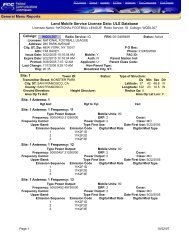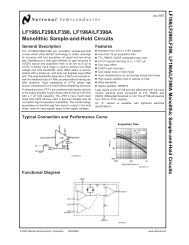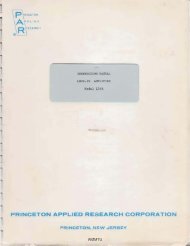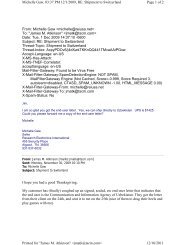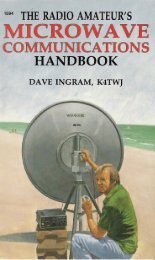A License Plate Recognition and Speed Detection System - Index of
A License Plate Recognition and Speed Detection System - Index of
A License Plate Recognition and Speed Detection System - Index of
Create successful ePaper yourself
Turn your PDF publications into a flip-book with our unique Google optimized e-Paper software.
Fig. 31 Assembled Oscillator<br />
The microwave oscillator circuit performs two functions. First, it produces a 2.6 GHz<br />
signal which is broadcast via a quarter-wave dipole patch antenna. Second, it uses a quarter wave<br />
antenna mounted in a resonant cavity to receive the reflected signal from the object whose speed<br />
we want to measure. Two one pound c<strong>of</strong>fee cans (with the ends cut out <strong>of</strong> one <strong>of</strong> them) are<br />
soldered together to form the resonant cavity. A stiff piece <strong>of</strong> wire is cut so that it extends<br />
approximately 1.1 inches into the can. It is mounted 1⅞ inches from the closed end <strong>of</strong> the can.<br />
This forms a ¼ wave dipole antenna housed in a resonant cavity. The metal walls <strong>of</strong> the c<strong>of</strong>fee<br />
cans reflect the incoming radiation in a way that allows only those signals with wavelengths that<br />
are multiples <strong>of</strong> the can diameter to undergo constructive reinforcement. This concentrates <strong>and</strong><br />
intensifies the radiation prior to entering the detector circuitry. The resonant cavity also helps<br />
narrow the angle from which the antenna can receive a signal, which improves the pointing<br />
41





